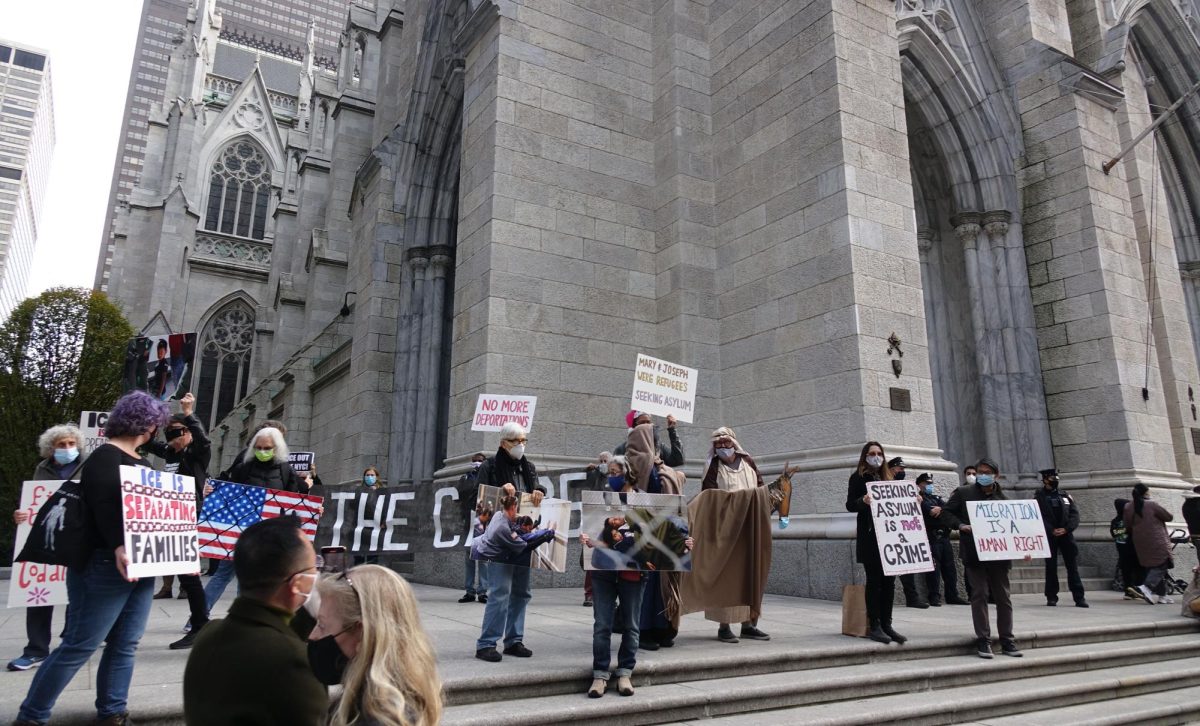
Last Wednesday, I attended the “Blood Donor Policy Panel” in the Charles B. Wang Center Theater presented by Stony Brook University’s Blood Donor Equality Movement. To be honest, my original purpose for going to the panel was to satisfy the “Hot Topic” event requirement for my undergraduate college. As soon as the panelists were introduced, my attention was fully devoted to the discussion on stage.
Being uninformed of the topic upon entering the theater, I would like to say that I came out relatively well-informed of the debate. But, I feel that some aspects of the argument were left out; mainly, the perspective of someone who was opposed to the movement.
Of course, I understand that it is difficult to find someone completely opposed to the movement; many people (myself included) can sympathize with both sides. However, I believe that if the panel had someone, say, a hemophiliac who was constantly receiving blood transfusions on the panel, then I think it would have opened the floor for more open discussion.
Also, as stated before, I think the difficulty of the argument manifests itself in the fact that people can sympathize with both sides. According to The Statesman, Dr. Louis M. Katz, executive vice president and chief medical officer of America’s Blood Centers, along with Dr. Benjamin J. Greco, medical director of the Long Island Health Services, both agreed that blood donor equality should be instated. Also according to The Statesman, they both agreed that blood donor equality should be achieved in increments.
The increment they argue for is, at the very least, a one-year deferral. This means that MSM (men who have sex with other men) blood donors must not engage in sexual activity for a year before donating blood. While some may consider this absurd, I think it is a step in the right direction. Katz and Greco both endorsed the step, despite statistics provided by Katz that a one-year deferral could lead to a 3 percent increase in HIV transmission through blood transfusion. Even though, as Dr. Katz claimed, the chance of contraction is astronomically small (one in two million transfusions, according to the American Red Cross’ website), I still think that people should strongly consider that statistic. Statistically speaking, one in every two million transfusions results in someone unintentionally acquiring HIV. While Dr. David Kilmnick, a gay man, supporter of the movement and the third panelist, is quoted as having stated, “I am not a statistic. I am an American citizen who should have the same rights as any other American citizen to donate blood,” I think some people who are affected may disagree.
Take hemophiliacs, for example. Hemophiliacs, who would be at an even higher risk of acquiring HIV due to the higher number of transfusions required per year, would disagree with Kilmnick because they are, in fact, a statistic, but more importantly, human beings who may not want their chance of contracting HIV to increase. No matter how small the chance of transmission happening is, someone who is afflicted probably won’t care much for the statistics when their livelihood is endangered.
Also, Katz, in a counterargument to Kilmnick’s quote above, made the following statement according to The Statesman: “There is no right to donate blood. It does not exist in law.” As harsh as this may sound, regardless of one’s feeling of duty, there technically is no legal right to donate blood.
Of course, I fully sympathize with those on the other side. As our nation faces a blood shortage crisis, I understand the LGBT community’s desire to help solve the problem. However, I also sympathize with those who may not be in full support of the bill without further evidence. Ultimately, it is an incredibly difficult issue that is going to take much more debate and research before a conclusion can be reached. However, I do think that some further research (provided by one-year deferrals) may be needed before full equality can be achieved.












